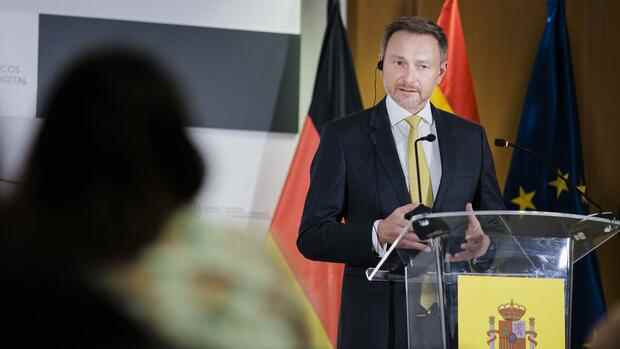Berlin The federal government is planning higher debts because of the Ukraine war. The draft budget for the current year still provides for debts of around 100 billion euros, according to government circles. But it won’t stop there.
In the further process, the draft budget is to include a supplementary budget be expanded. The draft budget currently being discussed will be significantly changed.
With this unusual measure, the federal government wants to buy time and air to be able to react quickly to the consequences of the Ukraine war. The federal government is currently planning further relief for citizens to compensate for the sharp rise in energy prices.
This measure alone would cost many billions of euros. The Greens and SPD also have their own plans to relieve the burden on citizens.
However, the consultations within the traffic light are not yet complete. However, any relief that the government decides will increase the debt this year and push the total liability well above the 100 billion euro mark for the third year in a row.
Despite the Ukraine war, Lindner plans to comply with the debt brake again as planned from 2023. This federal budget was “created in extraordinary times,” said a government representative. One is faced with the “unprecedented challenge” of having to deal with the first war on European soil in a long time.
The debt brake would leave little room for manoeuvre
Nevertheless, the federal government is initially planning new debts of only 7.5 billion euros next year. In the following years there will only be slightly more. The debt brake does not allow any more leeway, but the federal government is making full use of it.
Despite the requirements of the debt brake and the various crises – the pandemic continues to affect households – it is possible to relieve the burden on citizens, keep investments high, provide more money for climate policy and increase defense and development spending, it said in government circles.
Defense spending is now around 50 billion euros a year, plus the planned special fund of 100 billion euros, which was decided at short notice after the Russian invasion and is to be anchored in the Basic Law.
>> Read also: VWMercedes and Lufthansa are concerned about impending expropriation in Russia
Taken together, Germany has thus achieved for the first time the two percent target for defense spending that Germany had pledged internationally in 2014. However, Lindner rejected further demands from Defense Minister Christine Lambrecht (SPD). According to information from the Handelsblatt, she had even asked for defense spending of around 75 billion euros per year from the regular budget, plus the special fund of 100 billion euros.
According to the financial plan, general government investment is also around EUR 50 billion per year, of which EUR 20 billion is spent on transport alone. At the same time, Lindner even managed to close a billion-dollar gap in its planning for the year 2025.
There are various reasons why this balancing act has been successful for the time being: On the one hand, tax revenue has recently increased noticeably, with the federal government taking in around 17 billion euros more than recently forecast. Furthermore, the federal ministries were unable to spend several billion euros because of administrative bottlenecks. Lindner can also fall back on these billions. In addition, interest payments have fallen significantly.
The federal government can access reserves from the refugee crisis
Above all, however, the federal government will use a reserve of 48 billion euros in the years 2023 to 2025, which still exists from the times of the refugee crisis. Mainly thanks to this reserve, it is still possible to comply with the debt brake.
Nevertheless, the federal budget is very fragile. After 2025, the federal government will have to manage without the reserve. And no one knows what holes the Ukraine war will tear in the federal budget, as government officials also admit. “Of course, this financial plan is still provisional with a view to foreign policy developments, energy supply and relief for citizens,” said a government representative.
For example, the economic forecasts could soon be obsolete. The federal government could also face billions in costs if energy prices continue to rise or if there is an energy supply stop from Russia. The federal government is already spending 1.5 billion euros for the first time to increase gas reserves.
The federal government must pay back corona debts from 2028
And regardless of the Ukraine war, there is a risk of high additional spending. The financial planning does not even take into account the reforms of the traffic light coalition that cost billions, such as the pension reform, basic child security or tax subsidies to the social security funds.
From 2028 onwards, the federal government will have to repay the corona debt that accumulated between 2020 and 2022. This is what the debt brake provides for. From 2028, 11.1 billion euros per year will be due over 30 years.
For the federal government, this means that the little leeway left by the debt brake is as good as gone. De facto, Germany will have to keep the budget balanced for decades if the debt brake is to be adhered to.
And this despite the fact that the federal government has already given itself significantly more room to repay the corona debt in the new budget plan.
The original planning envisaged starting the debt repayment a few years before 2028 and repaying all liabilities by 2043. However, the federal government has now adapted its repayment plan to the specifications of the EU Commission and made the repayment of debt more generous.
More: New state aid in sight – economy demands quick regulations
